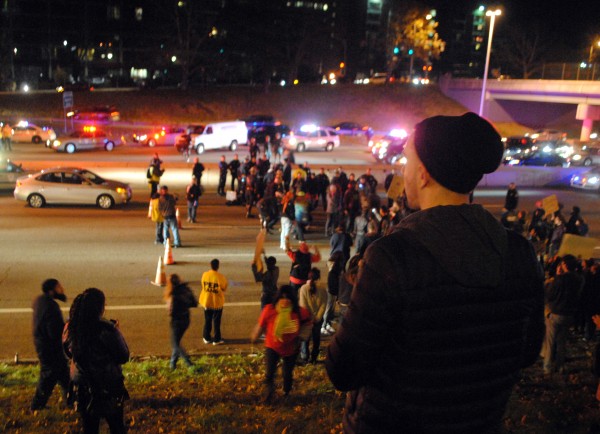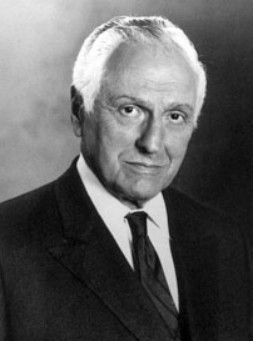
Many Rhode Islanders remember the day when 250 protesters, described by police as “mostly non-violent” but “certainly out of hand” moved towards the highway. The intentions of the protesters were unclear, but the leader of the rally spoke like a radical.
“We need a revolution,” he said
“The rally escalated to a march,” said Raymonde Wolstenholme, one of those arrested, “when someone with a bullhorn suggested that the group head for the highway, saying, ‘No one is seeing us here. Let’s go to 95, and maybe the governor will drive by and see us.’”
The police moved in and made seven arrests, charging them all with disorderly conduct. All were processed and released with a summons to be in District Court a couple weeks later. Due to the intercession of the mayor, who said, “These are normally law-abiding citizens… I do not feel it would serve any purpose to increase the difficulties and suffering of these people,” all charges were dropped.
The year was 1991.
Rhode Island was in the middle of the RISDIC crisis. The Rhode Island Share and Deposit Indemnity Corporation was a financial institution insurance program with a name that made it sound like a government institution, but in reality it was a private agency, and it was out of money. Thousands of people had their life savings frozen, perhaps lost. Many of the people affected were elderly, their hard earned retirement savings gone.

The new Governor, Bruce Sundlun, made some unpopular moves to rescue the life savings of the depositors, even as rumors mounted of elderly people losing their homes, forced to eat cat food to survive or even taking their own lives. To help get depositors their money back, Sundlun formed DEPCO, Depositors Economic Protection Corporation, and put Richard H. Gaskill in charge as Executive Director.
In September of 1991 Gaskill planned a $2,000 party that “was intended to bring DEPCO employees and employees from the closed Central and Rhode Island Central credit unions together in an informal atmosphere to meet and share ideas.” [Providence Journal; August 27, 1991] Depositors were outraged. Jack Kayrouz, head of Citizens for Depositors’ Rights Organization, representing those whose savings were at stake, described the party as “Arrogance.”
“This (party) tells us what kind of people are running our economy,” Kayrouz said. “They’re not made of flesh and blood. They’re made of precious metal. They’re immune to the suffering of the depositors, the taxpayers and the elderly. We need human beings in charge. We need a revolution.“
Citing “adverse publicity” the party was cancelled, but protesters gathered outside The Rhode Island Central Credit Union on Jefferson Boulevard in Warwick at 7pm anyway and blocked traffic for about two hours. That’s when “the rally escalated to a march,” the protesters headed towards the highway, and the police made seven arrests. From the Providence Journal:
Herbert Schoettle, 65, of Warwick was arrested for disorderly conduct after he put a chair in the middle of Jefferson Boulevard and sat down.
Others arrested on the same charge when they tried to enter the ramp onto 95 were: Thomas J. DeAngelis, 65, of Cranston, Ertha DeAngelis, 60, also of Cranston, Steven J. DiPalma, 37, of Coventry, Raymonde Wolstenholme, 68, of Burrillville, Donald Wolstenholme, 67, of Burrillville and Margaret H. Fitzgerald, 32, of Coventry.
“We never made it to the highway,” said Steven J. DiPalma, when I called him at his home, “As a matter of fact, you want to hear the stupidest thing? This is stupid. I wasn’t even picked up. My fiancé at the time [Margaret H. Fitzgerald] was. They grabbed her… they didn’t grab her… They just escorted her onto the bus. She wanted me to hold her pocketbook, and I didn’t want to hold her pocketbook, so I actually followed her onto the bus, but then I couldn’t get off the bus.”
“So you ended up getting arrested with her?” I asked, “That’s romantic.”
“Yeah, well, once you’re on the bus you’re on the bus.”
They were married shortly after, and are still together.
I asked what he thought of the Black Lives Matter protest in Providence last November that resulted in the highway being blocked and seven arrests.
“Personally I think it’s a stupid idea [to block the highway]. You can’t block a highway. First of all, there’s a lot of innocent drivers on the highway, just driving by. They don’t have any idea what’s going on. It’s a public safety issue.”
“But weren’t the people protesting with you intent on blocking the highway?” I asked, “That is why they were arrested.”
“I don’t think we were actually going to go block the highway, per se,” said DiPalma, “we were just going towards the highway, just to get media attention. That’s all we were trying to do. Get attention on the banking crisis of that time. We weren’t going to block a highway. We’re not suicidal!”
At the time of the arrests, Warwick Deputy Police Chief John J. Mulhearn said of the protestors, that, blocking traffic was “not the proper way to demonstrate. . . They cannot block major thoroughfares like that. It posed a dangerous situation for all involved.”
“This civil disobedience that you have is good,” says DiPalma today, “but it has to be within limits.”
I mentioned that I’m interested in this event because the treatment those arrested received then seems so different from the way those arrested in Providence are being treated today. I wanted to know if he thought there might be a racial component to the difference in treatment, but DiPalma didn’t see the difference as black versus white. To him it seemed to be about older versus younger defendants.
“The people in the crowd were mostly older people and middle aged people. We weren’t a young crowd of 20 year old people doing these things. We were just trying to get attention. We weren’t there to cause any harm to drivers.”
Ultimately the charges against DiPalma and the others were dropped. DiPalma’s brother, a recent law school graduate, represented him, but there was little to do once Warwick Mayor Charles Donovan asked that the charges be dropped. My brother, says DiPalma, “really just went with the flow. Nothing came of it.”
Now that he’s 61 years old, DiPalma isn’t the least bit ashamed of his actions back then, but he thinks he’s less likely to participate in a protest today. “If I had to do it again, at my age now, I don’t think I would be walking around on 95 or any place. I like to stay home and go to work.”
Speaking to Steven Krasner at the Providence Journal in 1991, Raymonde Walstenholme, who was 68 at the time of her arrest, said, “We’re not ashamed of what we did. We did nothing wrong.” [Providence Journal; August 28, 1991]
The two incidents, so similar yet so different, are difficult to compare, but some insights are possible. The protesters then were white, older and middle class. An economic crime had been committed against them, and the public, including politicians, were immediately moved to help. The protesters today are young, of color and hail from a variety of socio-economic backgrounds but tend towards lower middle class. The sympathies of the public and the politicians are not with them.
In fact, some politicians, riding a wave of public opprobriation, have gone so far as to seek increased penalties and even classify the conduct of such protests as felonies. The seven people arrested in 1991 would have had very different lives if such legislation and been enforced against them.

